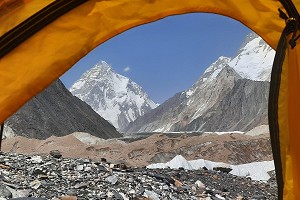
Outdoor guide Ed Poulter offers some top tips and a sample itinerary for a trekking holiday in Morocco.
This 2009 UKC article - Toubkal and the Atlas Mountains - and this UKC Review - Cicerone Mountaineering Guide To The Moroccan High Atlas - both by Cara-Lyn Reynolds may also prove useful if you decide to plan a trip.
Getting married and wondering where to go on honeymoon? That was exactly our dilemma before we got married in April 2012. We had discussed various options. Beach holidays were definitely not us, a trekking peak in the Himalayas was one option, another was to cycle up the Outer Hebrides and the final option we considered was the Atlas Mountains.
On the face of it the Atlas Mountains were not on the top of the list. The idea of spending two weeks in the perceived dusty barren mountains, the fact that we didn't speak French and the many mixed reviews we'd heard – it didn't bode well. However, after reading the somewhat limited information available on the web, we began to change our minds. Marrakech seemed an exciting melting pot of cultures, a very favourable exchange rate helped keep costs down, and the bonus of big rugged mountains all within a three and a half hour flight of the UK all seemed promising. Neither of us had been to Africa before, either, so we decided to give it a go. Here follows some information that I hope will persuade you to visit the High Atlas, and help you plan your trip.
Landing in Marrakech early on Saturday evening gave us the opportunity to have dinner at our Riad, then wonder around the bustling markets and experience the Place Jemaa El Fna at its best with the various street artists, story tellers and food stalls.
We spent three nights in Marrakech, which allowed us to adjust to Morocco's unique culture with its Arabic influences. Marrakech is somewhere that you will either love or hate – we loved it. Yes, you get hassled and you need to keep your wits about you, but go with the flow and just enjoy the smells, the busyness and its chaotic life. The three days also gave us time to decide exactly what we were going to do trekking wise. We had a pretty good idea before we left the UK but the time in the Riad gave us an opportunity to read the guidebooks properly and ask the Riad manger for tips. Marrakech also had several western style supermarkets, which we used to buy food for the trek.
Our general trekking plan was to start our trek in Imlil (using a Grand Taxi to get there). We were then going to hire a muleteer and a mule on the afternoon we arrived. This plan changed when we got to Imlil and found that the Tizi n'Ouanoums were still snow covered. Instead, we decided to hire a local guide from the Guides Office in Imlil and carry our gear ourselves.
We met our guide on the morning of day 1 of the trek. Ohma spoke limited English but enough to get by. In terms of our itinerary we pretty much set it ourselves and Ohma tweaked it to make it even better, and to incorporate a mixture of camping and basic hostels.
Our day-by-day itinerary
Trekking in Morocco totally exceeded our expectations – the dusty barren mountains actually revealed mountains that were home to a lively population of Berbers, lush green terraced gardens and a handful of relatively easy 4000m peaks that most seasoned hill walkers would be able to summit. It's a totally different experience to that of the French Alps. The food or tajines that we ate (chicken and lemon) has had a lasting impression on us, we now cooking tasty tajines in Yorkshire! You do get hassled a bit especially in Marrakech and to some extent in Imlil but its all part of the fun and to a certain extent the culture that you are there to experience. On the whole people are friendly and helpful, you'll drink copious amounts of sweet mint tea and probably meet other westerners especially around the main Toubkal trekking areas to share your experiences with.
Day 1
Imlil to Taccheddirt, 4hrs walking (Camp). We walked North West out of Imlil to the Tizi n'Tamatert pass where there was a shack selling Berber Whisky or Mint tea (you will find that you will be served this everywhere you stay or stop!). We then walked along the newly built road (not marked on Orientazian 1:50,000 Toubkal map) to Tacheddirt. That night we camped on top of an unfinished hostel overlooking the town and its people hustling their farm animals up and down the road.
Day 2
Oukaimeden 3262m from Tacheddirt - 6hrs return. In order to start becoming acclimatised we decided to bag a fairly simple peak Oukaimeden that had panoramic views of Toubkal. It did have an interesting South West ridge that involved some simple scrambling of around grade 1 standard. On the way up we saw some of the local Berber women collecting grass high up on the mountain, it was incredible to comprehend how much they were carrying on their back. We stayed another night on our roof top hostel.
Day 3
Tacheddirt to Timichichi over the Tizi n'Tacheddirt (3100m) - 6hrs (Hostel). Today's trekking really explored the true atlas, climbing to the pass revealed more amazing views of snowy peaks but the culture that we experienced as we descended through the Assif Labassene was amazing. We met Berbers herding goats high up near the pass boiling up their mint tea on an open fire and as we walked through the village of Labassene noticed the complex terraced farming systems watered by an array of irrigation channels that turned the arid landscape into green agricultural meadows.
Day 4
Timichichi to Azib Likemt through the Kissaria Gorge - 8hrs. (Camp). Today was hard going from the start, scrambling up the bouldery river bed for 8hrs. In compensation the scenery encountered was impressive. It was like being on the set of an Indiana Jones movie! The gorge at first was quite wide but with steep towering cliffs and evidence of recent rock fall, it was not a place to hang around. Further up the gorge narrowed forcing us to wade through the river in order to reach the valley's upper reaches. We camped next to the river at Azib Lekemt at approximately 2500m.
Day 5
Azib Likemt to Amsourzerte over another high pass Tizi n Ououraine (3120m) – 6hrs (Hostel). Today was another tough day involving 1000m of ascent to the Tizi n Ououraine, but well worth the effort for the views that it afforded down into Assif n Tisgui. If you're still feeling fit when you reach the pass you could bag a peak such as Agounss n'Tiniline 3674m (3hrs return). It was a long descent into Amsourzerte at 1797m but it was rewarded with a sense that we were back in civilization where we could top up our provisions and drink cola.
Day 6
Amsourzerte to Lac D'Ifni – 3hrs – rest day! (Camp). Back at 1797m it was a lot warmer than in previous days which made the going that much harder. Today felt very much like a rest day as we strolled along the valley up towards Lac D'Ifni stopping off at various cafes drinking sweet mint tea. Lac D'Ifni has been created not by glaciers but by fluvial processes and the bands on the sides are a result of attempts by the Berbers to regulate the flow. There is not any drinking water available but you may be able to buy bottled water from the shacks around the lakeshore. I wouldn't advise drinking the water out the lake or swimming in it as we were just about to go for a swim when a snake emerged with its head out of the water about a metre away!
Day 7
Lac D'Ifni to Nelter Refuge via Toubkal (4167m) 9hrs. (refuge). Today was strenuous - involving 1800m of ascent up a very intricate and steep route that wound its way up the south side of Toubkal. Instead of dropping over and down the Tizi n Ouanoums and meeting the tourist track, we took a rising traverse that took us up onto the south western side of Toubkal and to a col at 4000m. This route then allowed us to meet with the main tourist track and summit Toubkal. The main tourist track is technically easy, more akin to a Scottish Munro path. The altitude did have some effect, mainly shortness of breath. Compared to the other days of relative peace once on the main Toubkal trail we met considerably more people. Staying at the CAF Nelter Refuge was basic but afforded us hot showers and allowed us to sleep and eat in relative comfort. It was also a good time to share our experiences of the last seven days with the other mountaineers around.
Day 8
Nelter Refuge to Around -2hrs (Mountain Refuge). Today was all about getting back down. We stayed in Around, about 2hrs downhill walk from the refuge. Around is a much nicer place than Imlil as it affords a view of Toubkal and is a lot less touristy.
Day 9
Around to Imlil (1hrs) then by Grand Taxi on to Marrakech.
Top Tips For Travelling in Morocco and Trekking The Atlas Mountains
Below is a collection of top tips that I put together on returning back to the UK to help make it a bit easier for others venturing to Morocco and the Atlas Mountains. I hope you find it useful!
The Basics
We travelled to Morocco between April 28th – May 12th 2012 and the exchange rate was 13.5 Dirham (DH) to the £1.
Language
French and Arabic. People do not tend to speak much English apart from in the main refuges in the Atlas. If you want to get even remotely of the beaten track, take a good French phrase book!
Arriving in Marrakech / Taxi Travel
We had arranged with our Riad to arrange a private tourist taxi to pick us up from the airport, this cost us 160DH. You can get a petit taxi for around 60DH (be prepared to haggle) just outside the airport but beware they will not be able to drop you into the Medina as the streets are too narrow for cars. Our private taxi dropped us outside the Medina walls then arranged for a man with a wheelbarrow to take us and our bags to our Riad. There are two types of taxi in Morocco: petit taxis are like black cabs for short journeys, grand taxis are large Mercedes used for longer journeys.
Food for the trek
Can be bought in some of the supermarkets in Marrakech. There is a good range and it will be cheaper then in Imlil. There is a good supermarket on the Rue Echchouada off the Place De La Liberte.
Money for the trek
Get money in Marrakech before you head to the Atlas. There's nowhere to get cash in Imlil. We took 4000DH per person (8000DH between us) and only just had enough to pay for a taxi back to Marrakech (although we did hire a guide at 400DH per day for 8 days).
Getting to the High Atlas (Imlil for us)
Get a grand taxi. These can be caught from the outskirts of Marrakech. See the Orientazian 1:50,000 Toubkal map of Marrakech (on its reverse): the taxi rank is shown on the bottom centre left. Expect to pay around 200DH – you can get five people in a Grand Taxi.
Hiring Mules / Guides
Lots of large groups hire Mules and we were intending to do this. However, they can't be used when there is snow in the passes (up to April and sometimes into early May). You can also go the whole hog and get mules, cook and guide and the rough price for this per person per day is around 400DH. To find out if there is snow in the passes, you can ring the guides office in Imlil – 00212 44 48 56 - and Brahim is your man. We chose to carry our own gear in a rucksack (as the passes were still covered in snow) and hired a certified guide. With hindsight, hiring a guide was a good choice (cost 4000DH for an Official Mountain Guide for the eight days for two people including food allowance). We got our guide from the Bureau de Guides in Imlil – make sure you get them to show you their ID badge – as there are also rogue guides offering their services. We booked our guide on the afternoon we arrived and he met us the next morning ready to go. The guides know the mountains well but more importantly are able to act as an interpreter with the local Berber population and help access areas and experiences that would have been difficult as an independent trekker.
Accommodation
Once at Imlil you may find that your taxi takes you to some of his 'friends' accommodation'. We asked to go to the CAF refuge – he then had to take us back to the CAF refuge when we were not interested in his friends' accommodation! The CAF in Imlil is basic - we paid 100DH pppn including breakfast, which in hindsight is comparatively quite expensive. On our return to Imlil our guide sorted out our accommodation for 100DH each including dinner and breakfast in a much nicer place in Around, which sits on the hillside about 3km up from Imlil.
Trek Accommodation
We stayed in some basic accommodation some nights and camped on the others. When we stayed in accommodation costs were generally around 30-40DH each, 10DH each for a hot shower and 10DH for Mint tea.
Trek Food
While on the trek buying food was somewhat limited, we could ask our guide to liaise with the various guardians of the accommodation that we stayed in for basic provisions such as bread, which cost around 3DH (for a flat bread – like a naan). There were only shops in Amsourzerte.
Guidebooks
The 'Lonely Planet Guide to Morocco 2011' is pretty good and up to date. It has some useful and accurate info about treks and Marrakech. We also had the Cicerone guide 'Trekking in the Atlas Mountains', which we found less useful. The other Cicerone guide - 'Mountaineering in the Moroccan High Atlas' – has good reviews, but we didn't use it.
Maps
We bought the Orientazian 1:50,000 Toubkal map. The map is satisfactory but lacks detail and campsites marked were not always in existence. The map of Marrakech on the opposite side is very good. Best to buy your maps from Stanfords in London before you go – they do mail order. We didn't find anywhere in the Atlas or Marrakech selling maps. Also ensure that the map covers the whole of your intended route – best to ponder over them before you buy if you can!
Equipment Bags
If you're going before June, make sure you take a trekking rucksack. We took kit bags, which meant that we had to rent rucksacks in Imlil as there was still snow in the high passes and we were unable to hire mules to carry our packs. Cost around £20 for the 10 days.
Stove
If intending to cook by yourself take a stove that works on flammable liquids from the UK. Although stoves are available in Morocco they are expensive and only work on the pierceable Camping Gaz canisters. Stoves are available in Imlil but are expensive (20DH stove hire per day and 20DH for each gas canister). Stoves are also available in Marrakech (off the Jemaa El Fna on a road called Rue De Bab Agnaou where you will find a hardware store, 400DH for a stove and gas). We didn't know this and spent a whole day looking for gas in Marrakech with no success!
Tent
Take a lightweight tent - we found ours very useful.
Walking boots
If just trekking then I would take your normal walking boots: B1 max.
Crampons / Axe
If travelling before June, take an axe and crampons. We had both but didn't use them. Take some bendy strap-on crampons that can go on B0 boots, they are just needed to get over the passes if trekking and it's what the guides do.
Water
Take purification tablets or chlorine dioxide.
About Ed Poulter
Ed loves to spend his free time getting out mountaineering, fell running, climbing and caving, meeting all the amazing people that make these sports so much fun!
Travel wise Ed takes every opportunity he can to get away and explore new places. Having climbed extensively in the European Alps he has also been further afield to places such as Sri Lanka, Norway, Peru, Greenland and Tanzania.
When not enjoying himself in his freetime, Ed has his own outdoor guiding business – Adventure Soul, which offers adventure guiding in wild places.



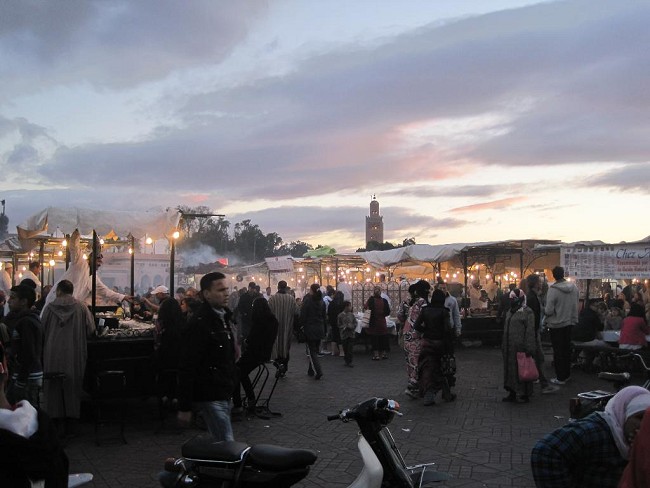
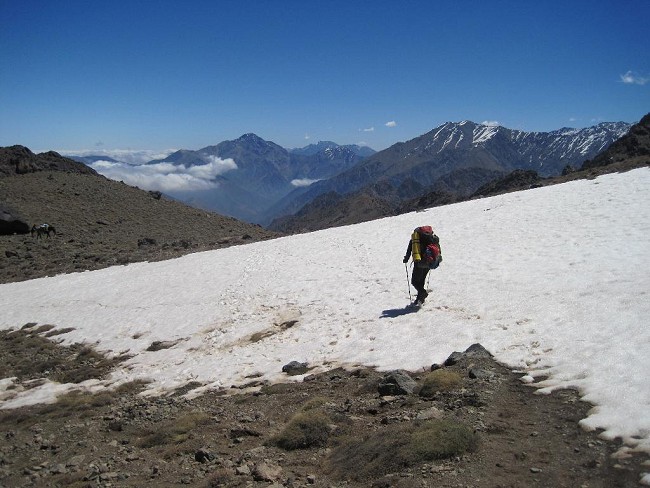
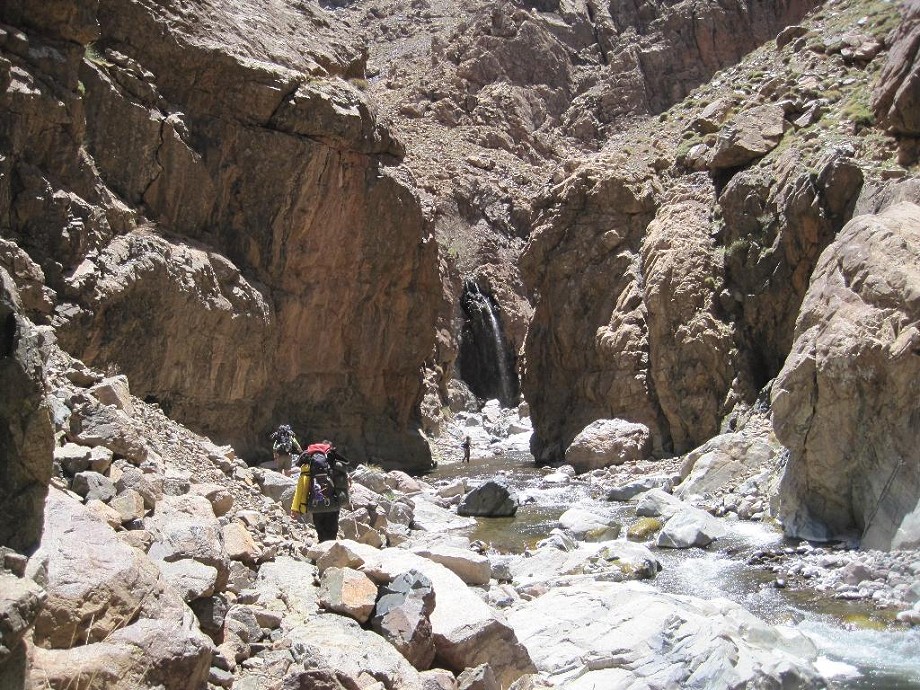
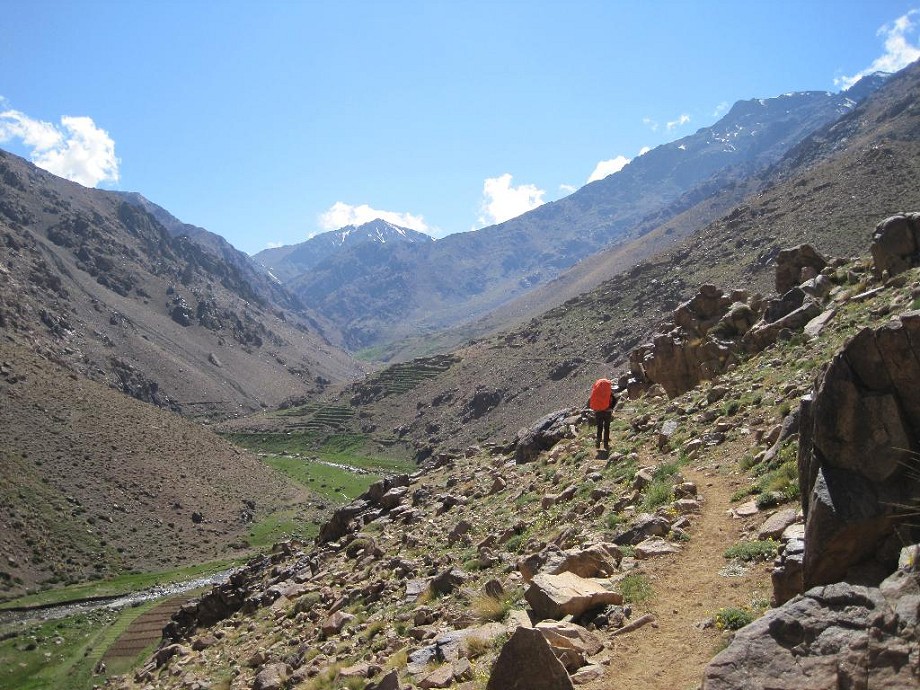
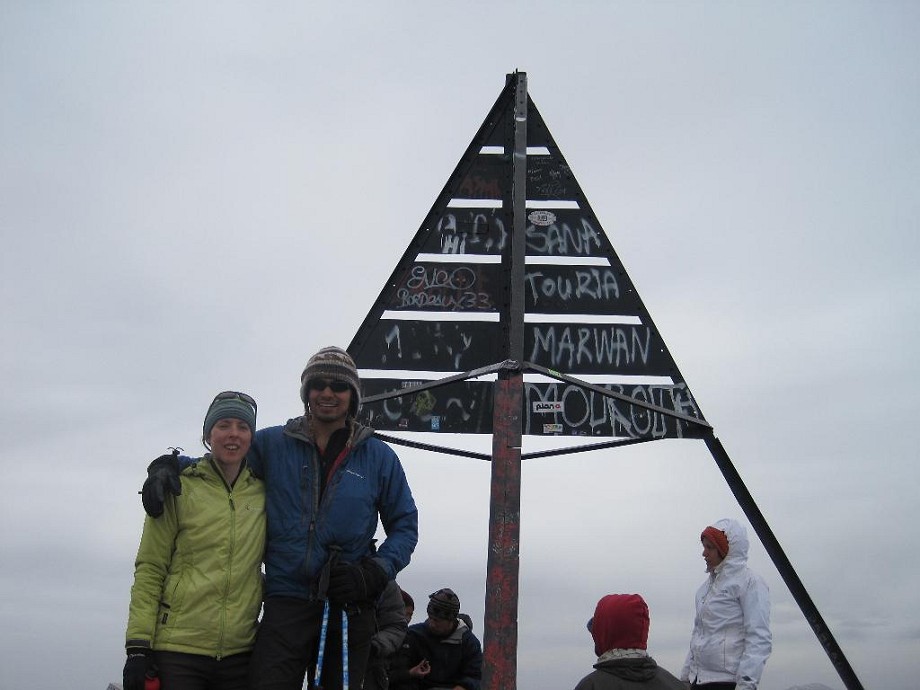


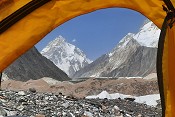
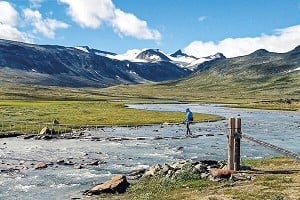
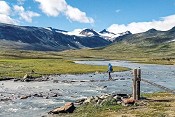

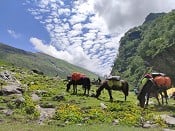



Comments